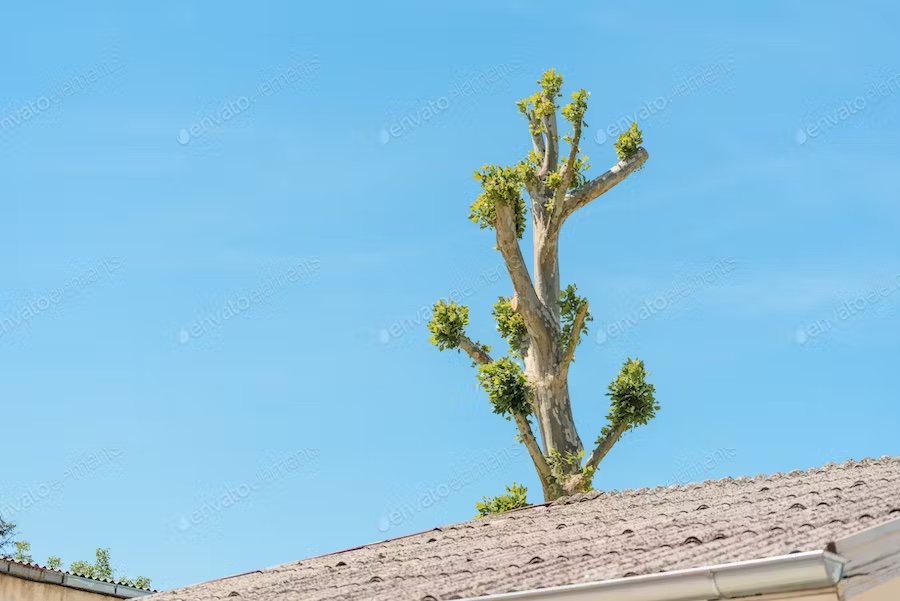Trees are not just beautiful additions to our landscapes, they are also essential for the health of our environment. Proper tree care and maintenance are crucial to ensure the longevity and vitality of these majestic beings. One common practice that often comes under scrutiny is tree topping. While it may seem like an easy way to control the size of a tree or address potential hazards, tree topping can actually have detrimental effects on the tree’s health and structural integrity. In this blog post, we will explore the dos and don’ts of tree topping, providing you with the knowledge and guidance needed to make informed decisions when it comes to caring for and maintaining your trees. From understanding the reasons behind tree topping to learning alternative methods for tree care, this comprehensive guide will equip you with the tools to ensure the well-being of your trees for years to come.
Tree topping is a controversial and often misunderstood practice in tree care and maintenance. It involves cutting off the top of a tree’s main branches, essentially reducing its height and size. While tree topping may seem like a quick fix for managing overgrown trees or to prevent potential hazards, it is actually considered an improper and harmful method of tree care. The main reason why tree topping is done is to control the height or spread of a tree. Some people believe that by cutting back the branches, they can prevent the tree from interfering with power lines, buildings, or other structures. However, this approach is flawed and can cause severe damage to the tree’s health and aesthetics. Tree topping is detrimental to trees for several reasons. First, it exposes the tree to potential diseases and pests as the fresh wounds from the cuts are vulnerable to infection. Second, removing the top branches disrupts the tree’s natural growth pattern and can lead to weak, unstable regrowth. This new growth is often poorly attached and prone to breakage, posing a safety risk. Finally, tree topping hinders the tree’s ability to produce energy through photosynthesis, as it drastically reduces the leaf surface area responsible for capturing sunlight. Instead of resorting to tree topping, there are proper methods of pruning and tree care that should be employed. A certified arborist can assess the tree’s condition and recommend appropriate techniques such as selective pruning, crown thinning, or crown reduction to maintain the tree’s health, structure, and aesthetics without causing harm. These methods allow for the natural growth and development of the tree while addressing any specific concerns. It is important to understand that tree topping is not a suitable solution for tree care and maintenance. By following proper practices and seeking professional advice, we can ensure the long-term health and beauty of our trees while promoting a safe environment for everyone.
Tree topping, a practice that involves severely cutting back the branches and top of a tree, is unfortunately still practiced by some homeowners and inexperienced tree care providers. However, it is crucial to understand the dangers and negative effects associated with tree topping. First and foremost, tree topping can seriously harm the overall health and stability of a tree. When a tree is topped, it loses its natural structure and balance, leading to weak and unstable growth. The regrowth that occurs after tree topping is often poorly attached, making it susceptible to breakage during storms or high winds. This poses a significant safety risk to both property and people nearby. Moreover, tree topping exposes the tree to various diseases and pests. The large open wounds left behind by the cuts invite pathogens and insects to invade the tree, causing further damage and potential decay. This can ultimately lead to the decline and death of the tree, requiring costly removal and replacement. In addition to the negative impact on tree health, tree topping also affects the aesthetics of the landscape. Topped trees often have an unnatural and unsightly appearance, detracting from the overall beauty of the surroundings. This can decrease property value and curb appeal, which is counterproductive to the intended purpose of tree care and maintenance. Furthermore, it is essential to mention that tree topping is generally discouraged by professional arborists and tree care organizations. Instead, they advocate for proper pruning techniques that promote tree health, structural integrity, and natural growth patterns. Pruning should focus on removing dead or diseased branches, thinning the crown to improve air circulation, and selectively shaping the tree to maintain its natural form. In conclusion, the practice of tree topping should be avoided due to its detrimental effects on tree health, stability, aesthetics, and overall safety. It is crucial to prioritize proper tree care and maintenance techniques to ensure the longevity and well-being of our valuable trees.
While tree topping has been a common practice for tree care and maintenance, it is not always the best approach. In fact, it can often do more harm than good to the overall health and integrity of the tree. Fortunately, there are alternative methods for tree care and maintenance that can help promote healthy growth and ensure the longevity of your trees. One alternative method is regular pruning. Instead of removing large sections of the tree, pruning focuses on selectively removing dead, damaged, or diseased branches. This allows for proper air circulation and sunlight penetration, promoting new growth and preventing the spread of diseases. Professional arborists can assess the tree and determine the best branches to prune, ensuring the tree’s overall health is maintained. Another alternative method is crown thinning. Rather than removing the whole top portion of the tree, crown thinning involves removing specific branches to reduce the density of the tree’s crown. This allows for better light penetration and airflow, reducing the risk of wind damage and promoting healthy growth. It’s important to note that crown thinning should be done carefully and by professionals to avoid excessive pruning, which can weaken the tree. Additionally, mulching is an effective method for tree care and maintenance. Applying a layer of organic mulch around the base of the tree helps retain moisture, regulate soil temperature, and suppress weed growth. This not only provides essential nutrients to the tree’s roots but also helps protect the tree from lawnmower damage and reduces the need for excessive watering. Lastly, proper watering and fertilization are essential for tree care and maintenance. Regularly watering the tree, especially during dry periods, ensures it receives sufficient moisture. Applying a balanced fertilizer can also provide the necessary nutrients for healthy growth. However, it is crucial to follow the recommended guidelines and consult with professionals to avoid over-fertilization, which can harm the tree and surrounding soil. In conclusion, tree topping should be avoided as it can cause significant damage to trees. Instead, alternative methods such as regular pruning, crown thinning, mulching, and proper watering and fertilization should be embraced for optimal tree care and maintenance. Consulting with professional arborists will ensure the best approach is taken to promote the health and longevity of your trees.
Proper tree care and maintenance are essential for the health and longevity of your trees. As we discussed in this blog post, tree topping is a practice that should be avoided at all costs. It can severely damage the tree, lead to disease and decay, and even shorten its lifespan. Instead, focus on promoting proper tree growth and maintenance techniques. To ensure the well-being of your trees, here are some important tips to keep in mind: 1. Regular pruning: Pruning is necessary to remove dead or diseased branches, maintain a desired shape, and promote healthy growth. However, it should be done correctly and at the right time of year to minimize stress on the tree. 2. Mulching: Applying a layer of organic mulch around the base of the tree helps retain moisture, suppress weed growth, and regulate soil temperature. Just be sure not to pile the mulch against the trunk, as this can lead to rot and pest issues. 3. Proper watering: Adequate watering is crucial, especially for younger trees. Deep watering, allowing the water to penetrate the root zone, is preferable to frequent shallow watering. However, be mindful not to overwater, as this can lead to root rot. 4. Regular inspections: Keep an eye out for signs of disease, pest infestations, or structural issues. Early detection can prevent further damage and allow for timely intervention. 5. Seek professional advice: If you’re unsure about proper tree care techniques or if your tree requires significant maintenance, it’s always best to consult an arborist or tree care professional. They have the expertise and knowledge to assess your trees’ health and provide appropriate guidance. By following these dos and avoiding the don’ts, you can ensure the well-being and longevity of your trees. Remember, trees are valuable assets to our environment, providing shade, improving air quality, and enhancing the beauty of our surroundings. Let’s give them the care and attention they deserve.

